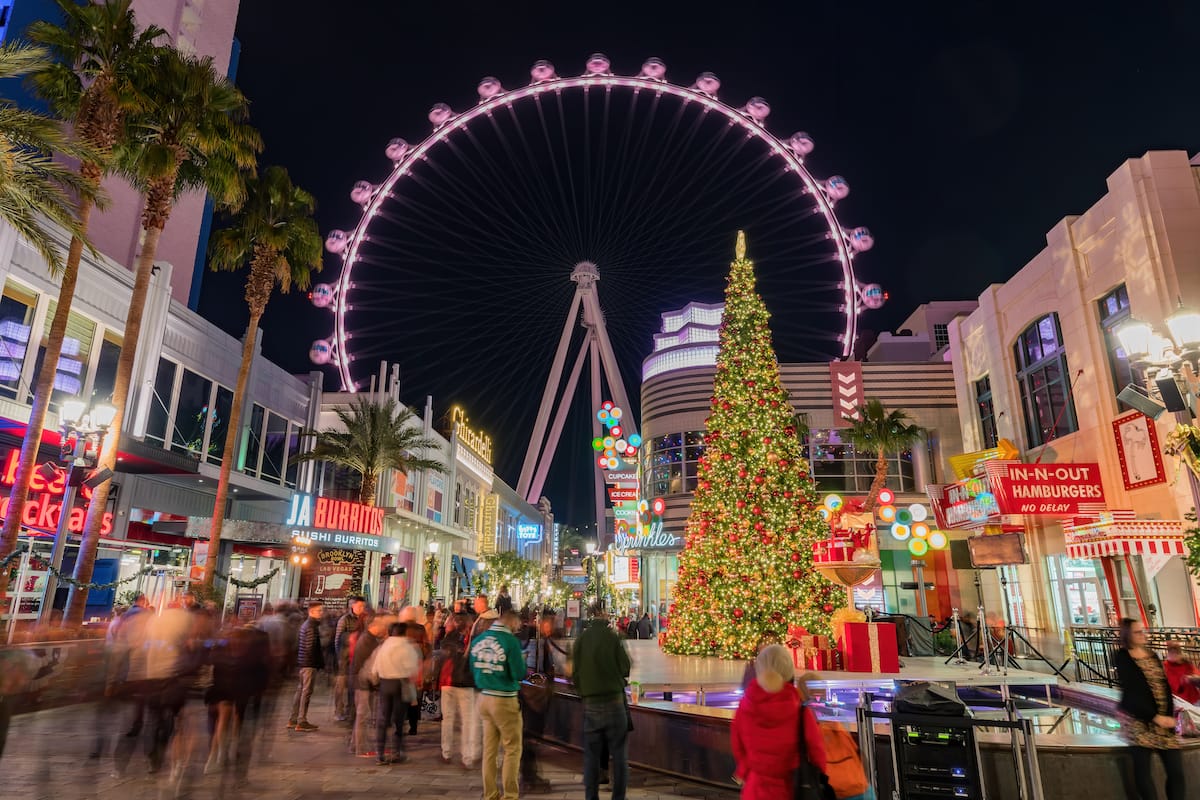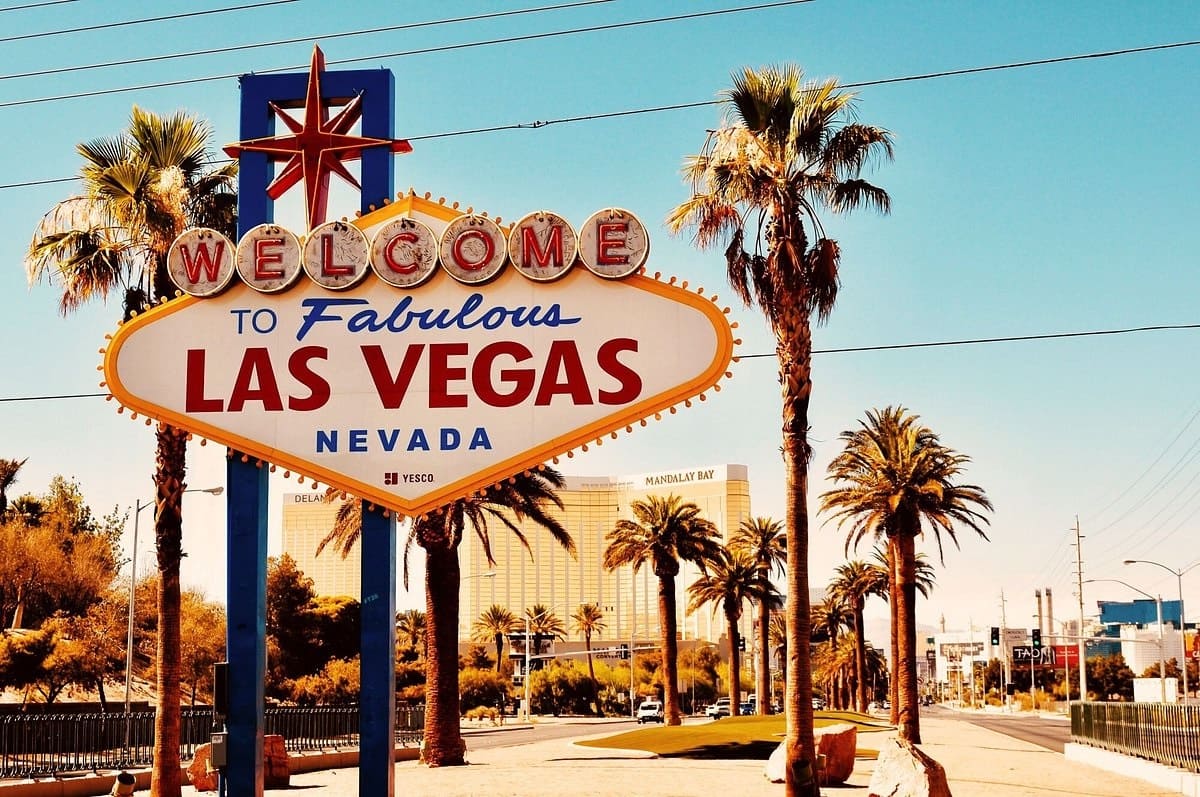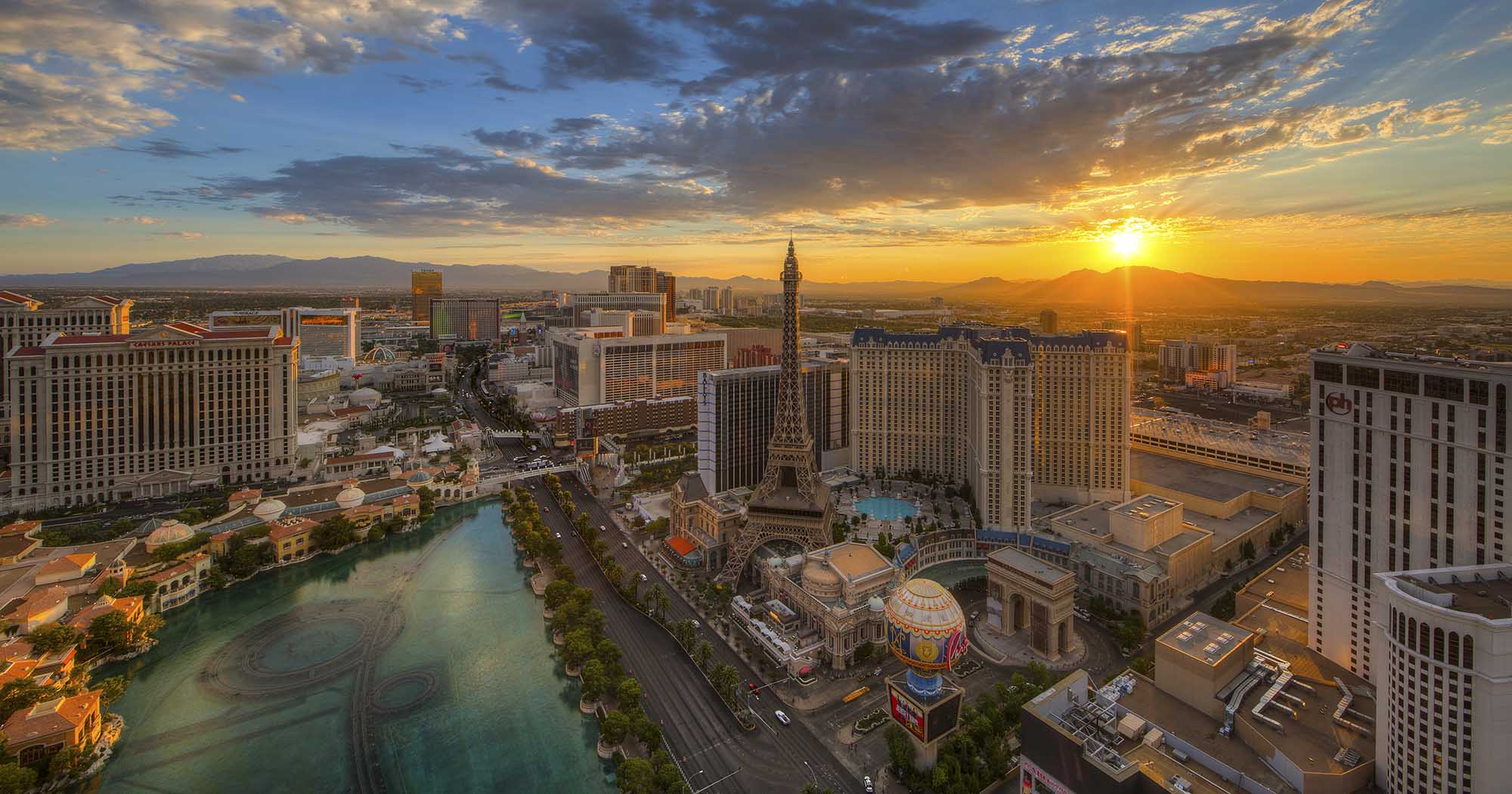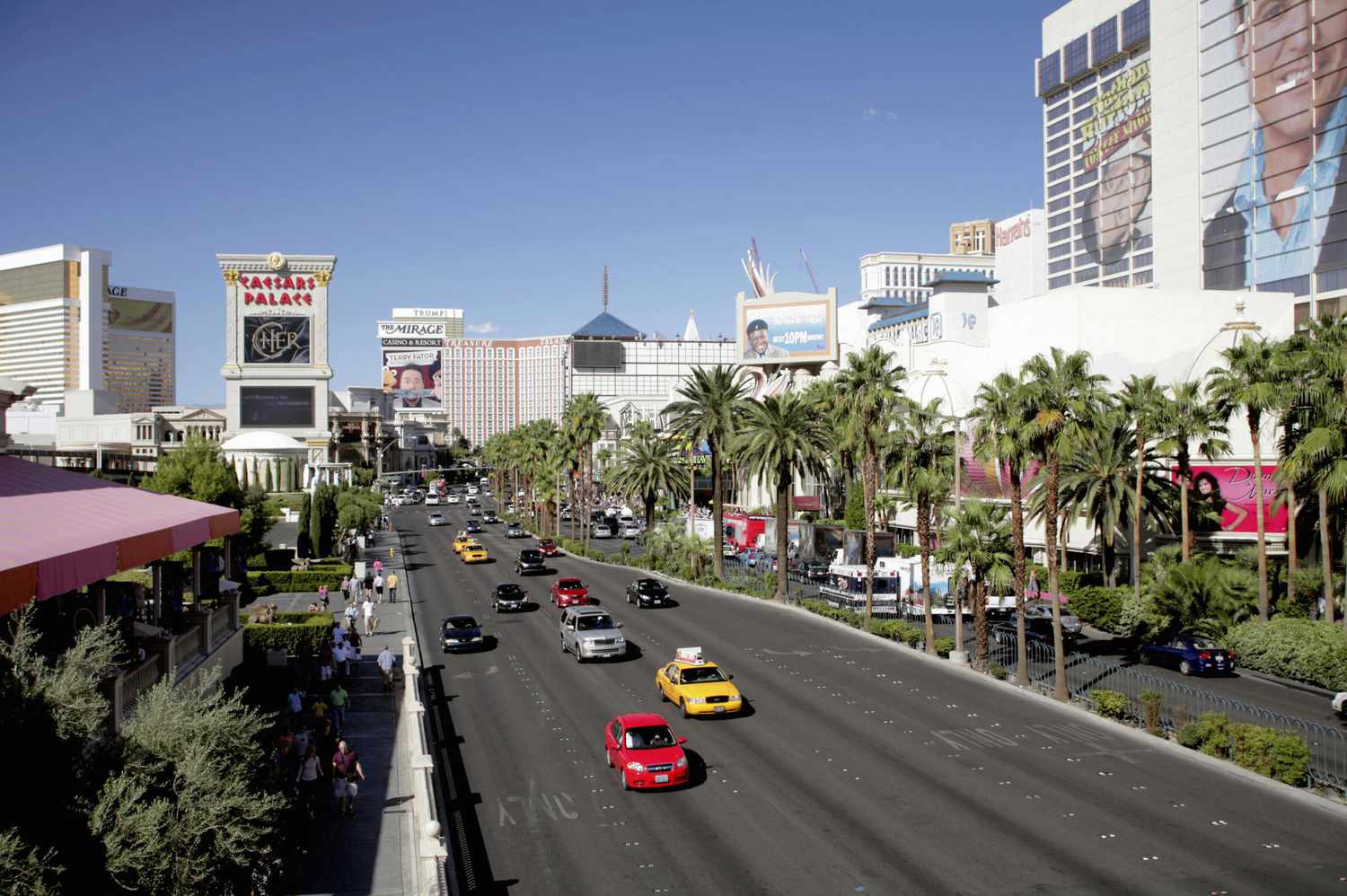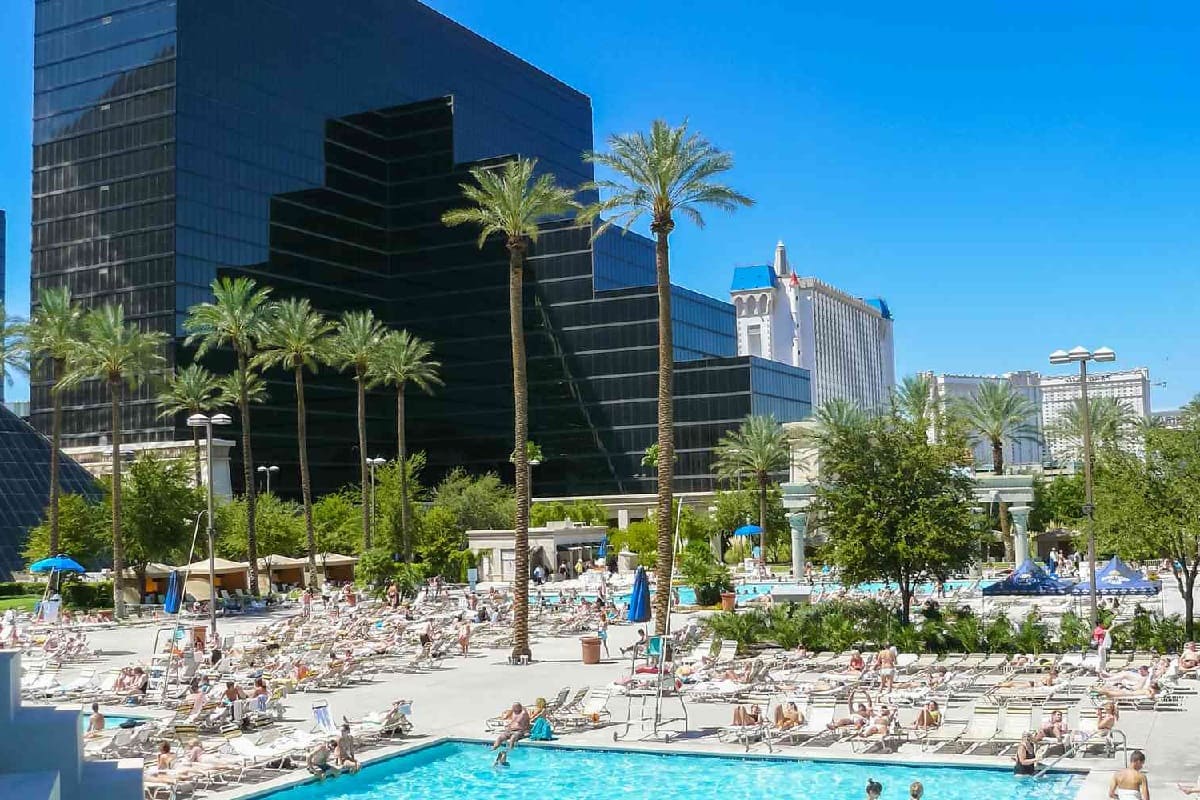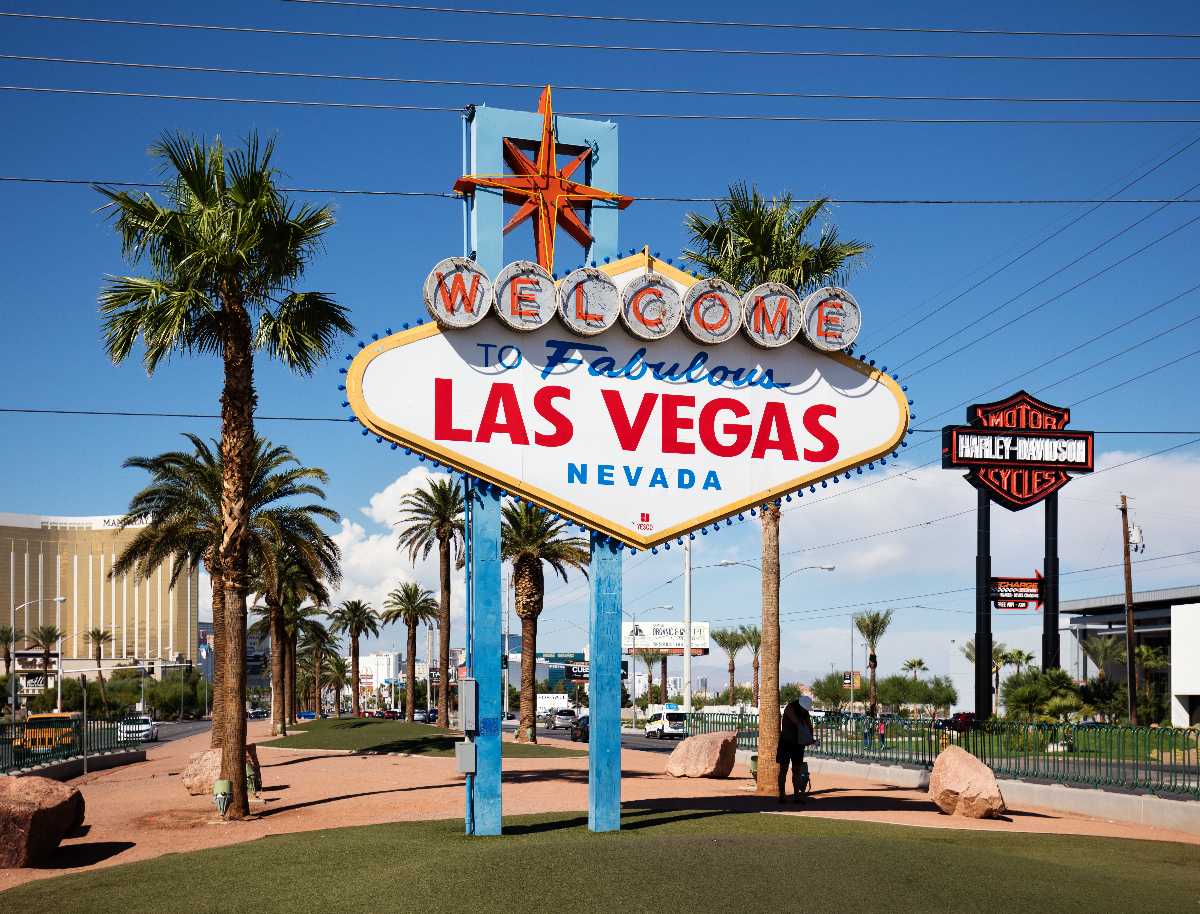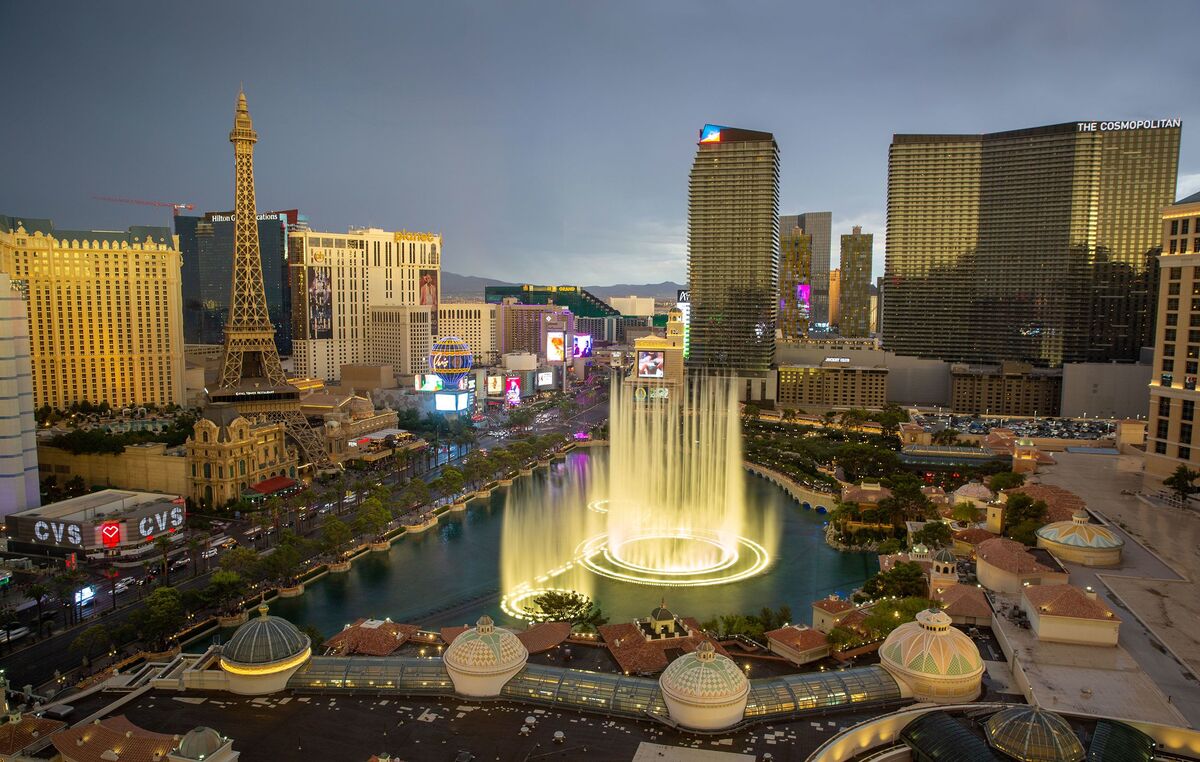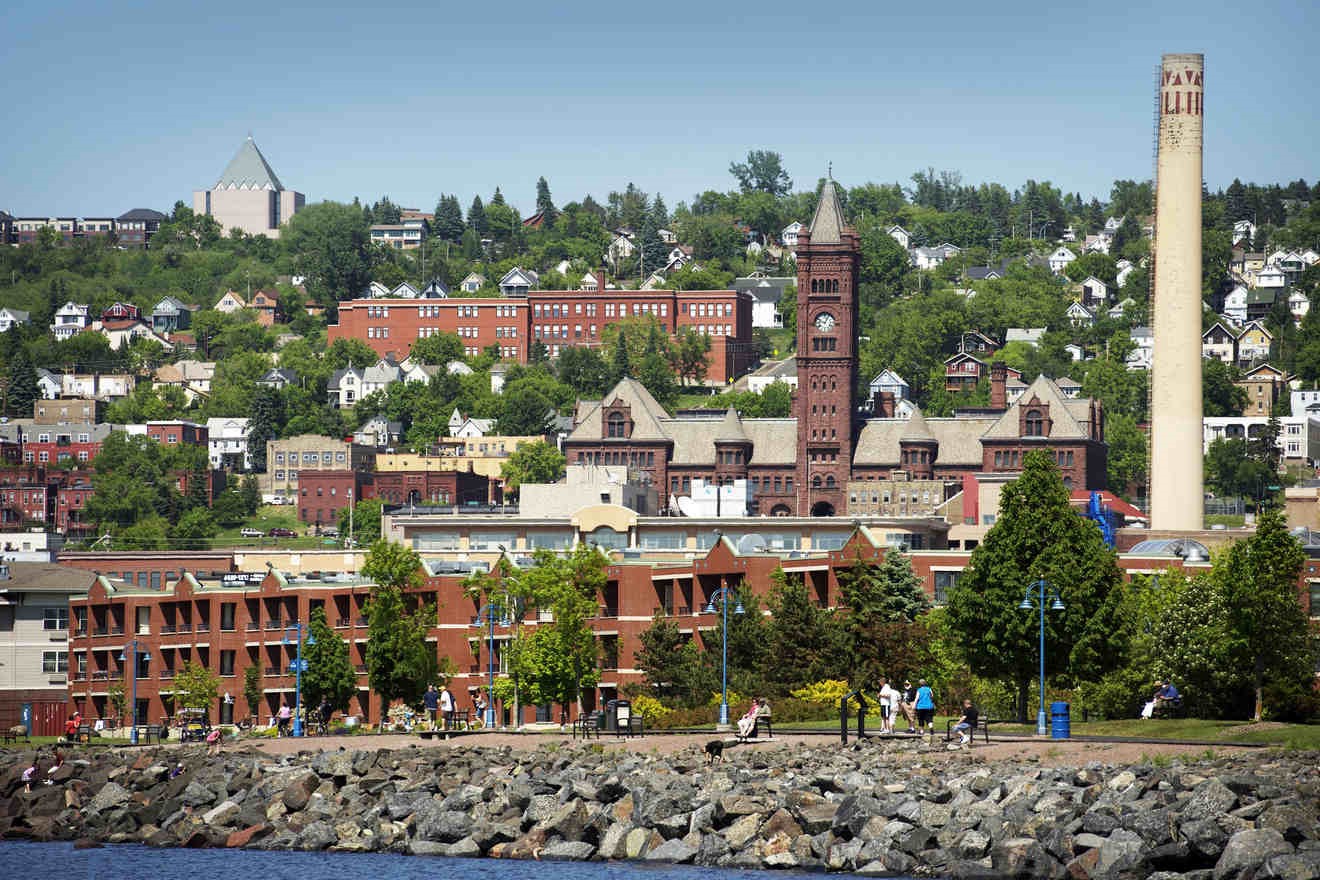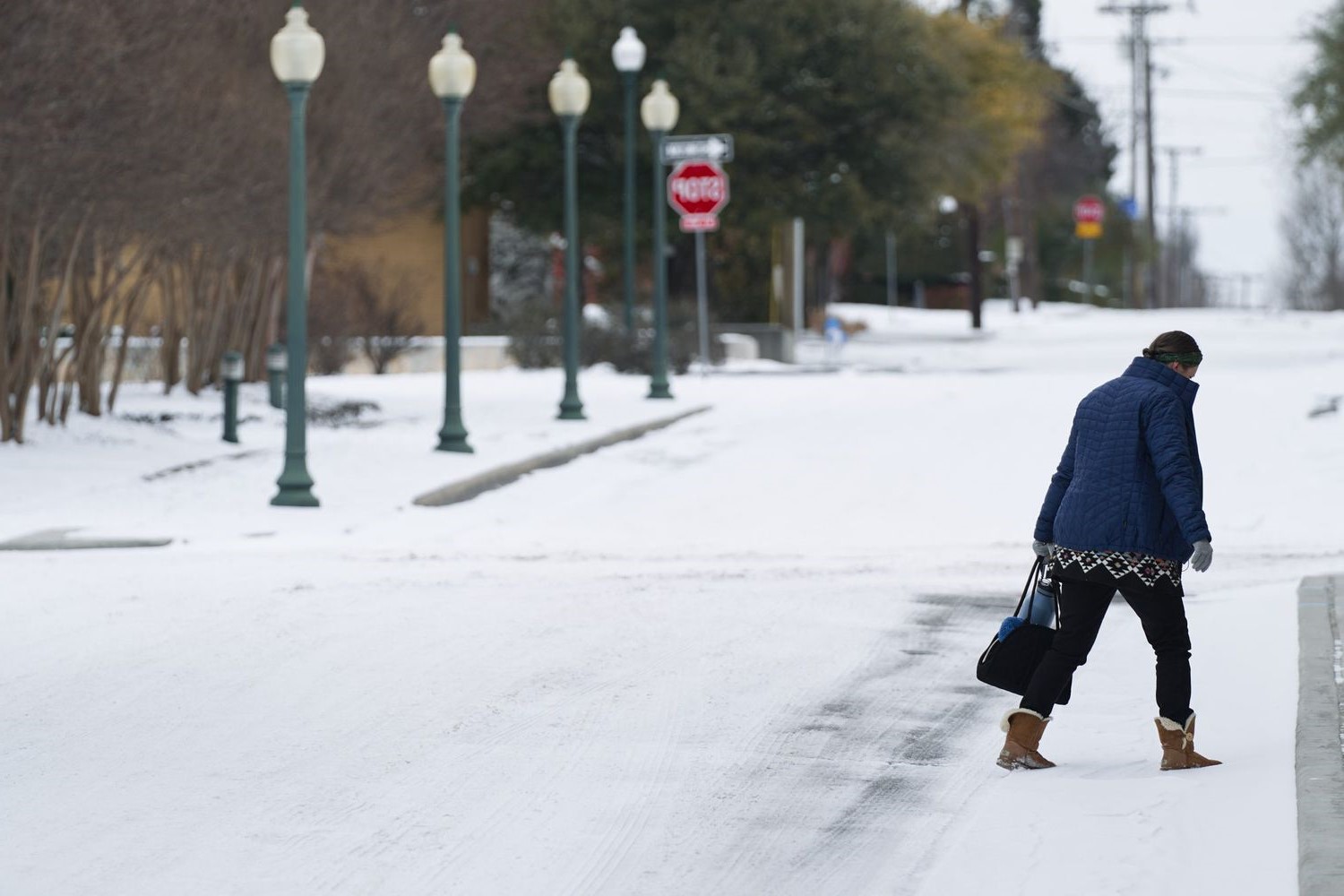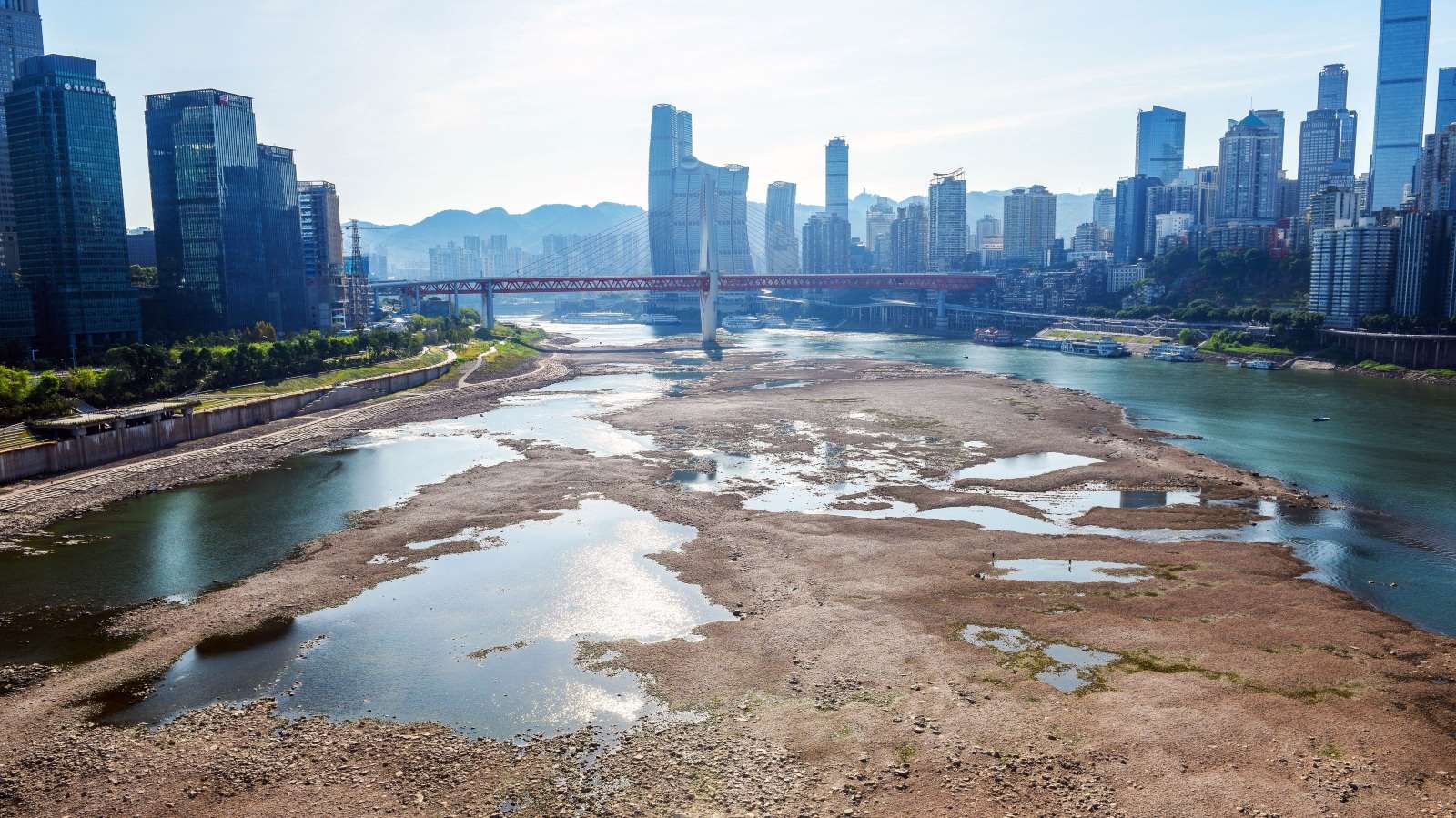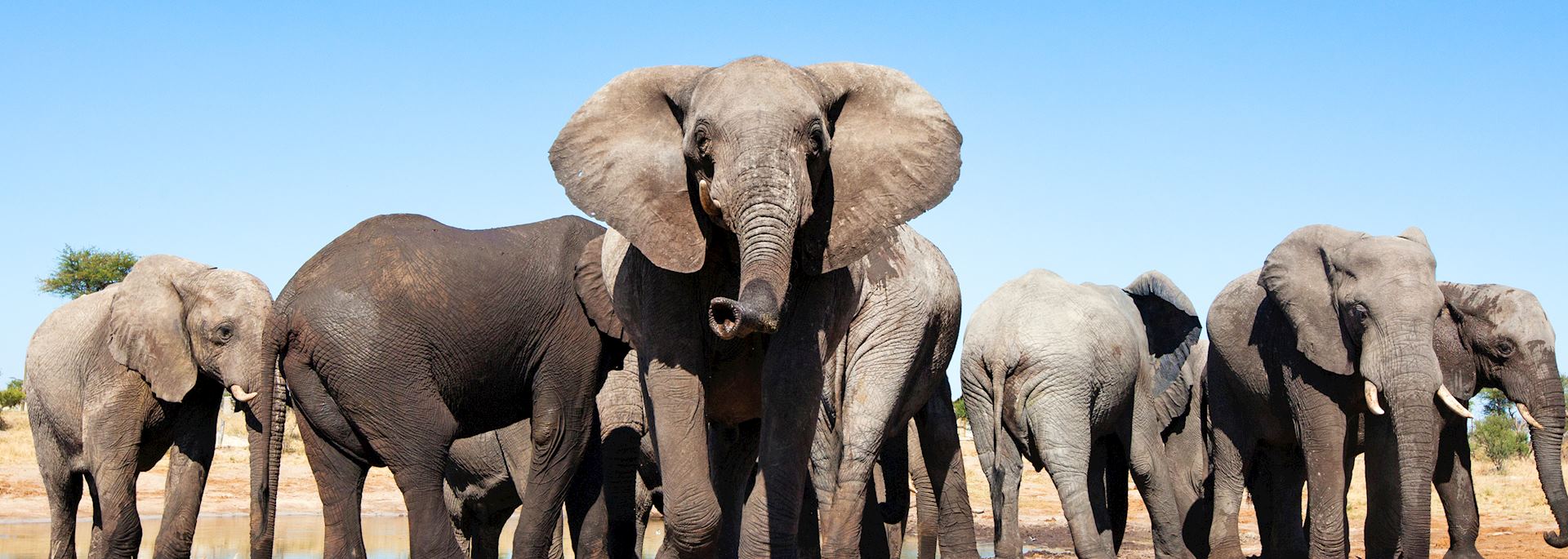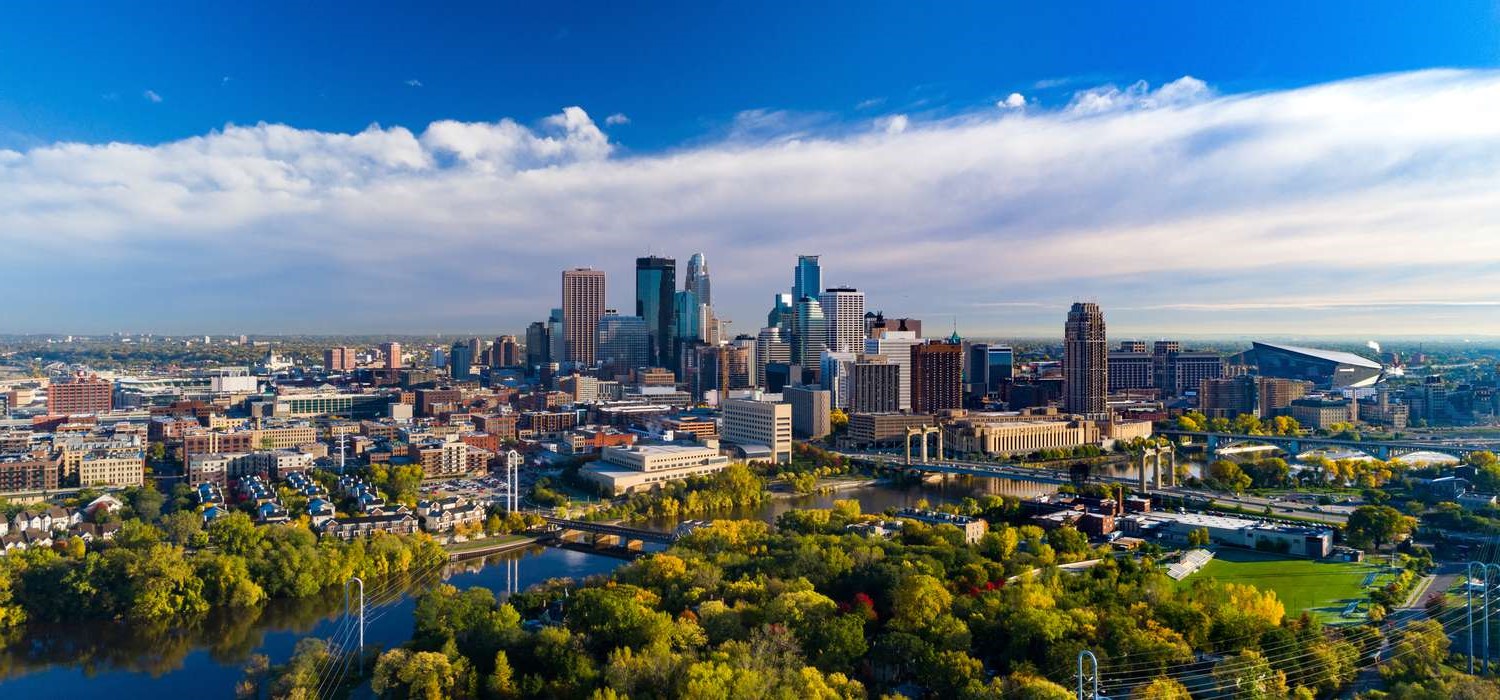Home>Weather and Climate>Las Vegas Weather: Monthly Climate Guide
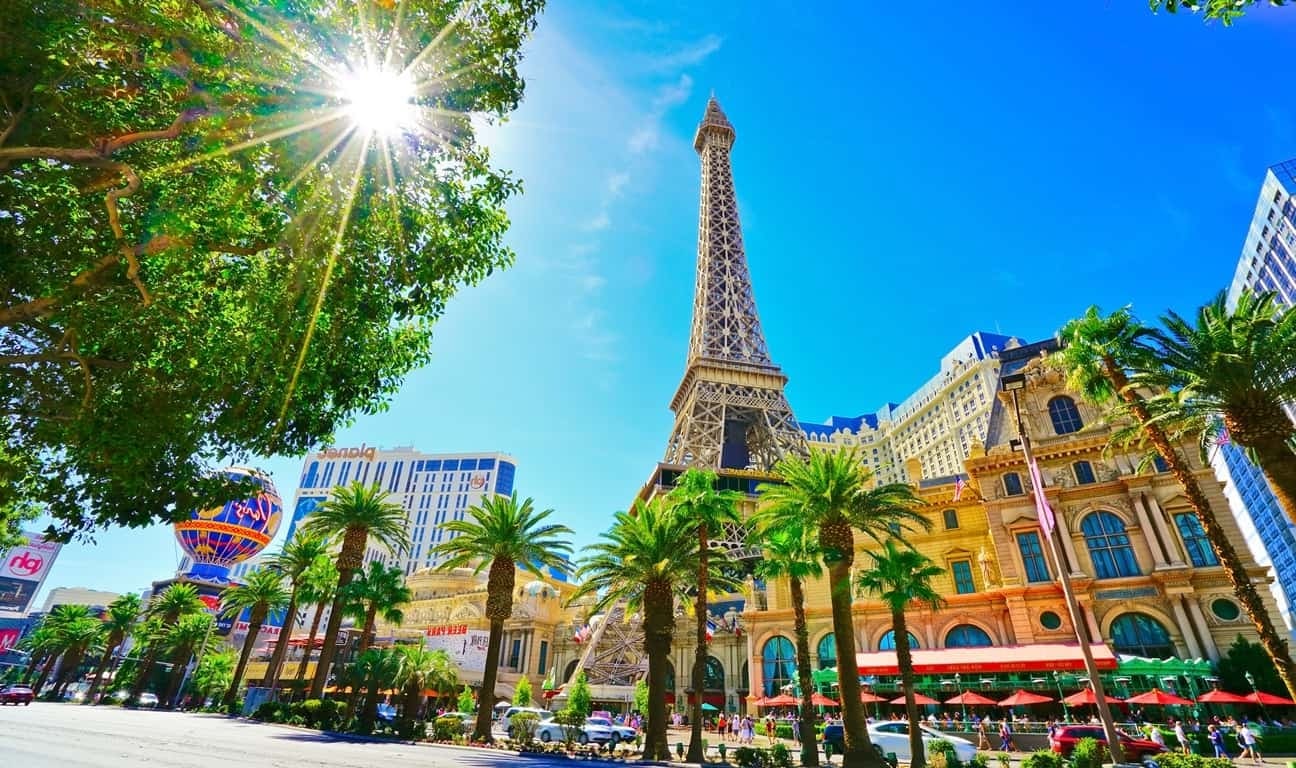

Weather and Climate
Las Vegas Weather: Monthly Climate Guide
Published: March 3, 2024
Plan your trip to Las Vegas with our monthly climate guide. Find out the weather and climate patterns to make the most of your visit.
(Many of the links in this article redirect to a specific reviewed product. Your purchase of these products through affiliate links helps to generate commission for Temperatures.com, at no extra cost. Learn more)
Table of Contents
- Introduction
- Understanding Las Vegas Climate
- January Weather in Las Vegas
- February Weather in Las Vegas
- March Weather in Las Vegas
- April Weather in Las Vegas
- May Weather in Las Vegas
- June Weather in Las Vegas
- July Weather in Las Vegas
- August Weather in Las Vegas
- September Weather in Las Vegas
- October Weather in Las Vegas
- November Weather in Las Vegas
- December Weather in Las Vegas
- Conclusion
Introduction
Las Vegas, known as the Entertainment Capital of the World, is a city that boasts a unique and diverse climate. Situated in the Mojave Desert, Las Vegas experiences a desert climate characterized by scorching hot summers and mild winters. The city's climate is a defining feature, influencing everything from tourism patterns to local lifestyles.
Understanding the weather and climate patterns in Las Vegas is essential for residents and visitors alike. Whether you're planning a trip to the iconic Las Vegas Strip or considering a move to this vibrant city, having a grasp of the local climate can greatly enhance your experience and preparedness.
In this comprehensive guide, we will delve into the monthly weather and climate patterns in Las Vegas. From the sizzling summer heat to the occasional winter chill, each month brings its own unique weather characteristics. By exploring the nuances of Las Vegas weather throughout the year, you'll gain valuable insights that can inform your travel plans, outdoor activities, and overall lifestyle in this dynamic desert city. So, let's embark on a journey through the ever-changing weather of Las Vegas, uncovering the distinct climate features that shape life in this dazzling desert metropolis.
Read more: Average Temperature In Las Vegas In January
Understanding Las Vegas Climate
Las Vegas is renowned for its desert climate, characterized by hot, arid summers and mild winters. Situated within the Mojave Desert, the city experiences minimal precipitation and abundant sunshine throughout the year. The desert climate is defined by its extreme temperature differentials between day and night, with scorching daytime heat giving way to cooler evenings.
The city's location within the desert landscape significantly influences its climate. The surrounding mountains, including the Spring Mountains and Sheep Range, play a crucial role in shaping the weather patterns experienced in Las Vegas. These mountainous terrains contribute to the rain shadow effect, resulting in limited rainfall and a dry environment.
Summers in Las Vegas are exceptionally hot, with average daytime temperatures often exceeding 100°F (37.8°C). The intense heat is further amplified by the urban heat island effect, where the city's infrastructure and human activities contribute to elevated temperatures. Despite the high temperatures, low humidity levels provide some relief, making the heat more tolerable compared to humid climates.
Winters in Las Vegas are relatively mild, with daytime temperatures typically ranging from 50°F to 60°F (10°C to 15.6°C). While snow is a rare occurrence in the city, the surrounding mountains may experience snowfall during the winter months, offering a picturesque contrast to the desert landscape.
The spring and fall seasons bring moderate temperatures, making them ideal times to explore the outdoors and partake in recreational activities. However, rapid temperature fluctuations are common during these transitional seasons, underscoring the dynamic nature of Las Vegas' climate.
Overall, the desert climate of Las Vegas presents a unique blend of extreme heat, minimal precipitation, and stark temperature differentials. Understanding these climate characteristics is essential for residents and visitors alike, enabling them to adapt to the weather conditions and make the most of their experiences in this vibrant desert city.
January Weather in Las Vegas
January marks the onset of the new year in Las Vegas, bringing with it distinct weather patterns that shape the city's landscape. As the winter season unfolds, Las Vegas experiences relatively mild temperatures compared to the scorching heat of summer. However, the desert climate still maintains its influence, contributing to unique weather conditions throughout the month.
During January, Las Vegas encounters average daytime temperatures ranging from 50°F to 60°F (10°C to 15.6°C), offering a respite from the sweltering heat of the summer months. The evenings and early mornings tend to be cooler, with temperatures dropping to around 35°F to 40°F (1.7°C to 4.4°C). This fluctuation in temperature underscores the desert climate's characteristic diurnal variation, where daytime warmth gives way to cooler nights.
While snow is a rare occurrence in the city, the surrounding mountainous regions may experience light snowfall, adding a touch of wintry charm to the desert landscape. The nearby Spring Mountains, including the popular Mount Charleston, often showcase a dusting of snow, creating a picturesque contrast to the arid terrain of Las Vegas.
January also brings clear skies and abundant sunshine to Las Vegas, with minimal precipitation throughout the month. The city typically experiences only a few days of rainfall, if any, during January, contributing to the overall dry and arid climate.
Despite the relatively mild temperatures, visitors and residents should be prepared for rapid weather changes during January. Sudden temperature fluctuations and occasional windy conditions are not uncommon, underscoring the dynamic nature of Las Vegas' winter weather.
For those seeking outdoor activities, January offers favorable conditions for exploring the natural beauty surrounding Las Vegas. Hiking in the nearby Red Rock Canyon or taking a scenic drive to admire the snow-dusted mountains can provide memorable experiences against the backdrop of the city's winter climate.
In summary, January brings mild temperatures, occasional mountain snowfall, and clear skies to Las Vegas, offering a refreshing contrast to the city's scorching summers. Understanding the unique weather characteristics of January can enhance the enjoyment of outdoor pursuits and provide valuable insights for residents and visitors navigating the winter season in this vibrant desert metropolis.
February Weather in Las Vegas
February ushers in a transitional phase in Las Vegas, where the city begins to emerge from the winter chill while anticipating the gradual arrival of spring. As the desert climate undergoes subtle shifts, February brings a blend of weather patterns that shape the city's landscape and outdoor experiences.
During February, Las Vegas experiences a gradual rise in temperatures compared to the preceding winter months. Daytime temperatures typically range from 55°F to 65°F (12.8°C to 18.3°C), offering a pleasant contrast to the cooler winter days. The evenings and early mornings maintain a cooler ambiance, with temperatures hovering around 40°F to 45°F (4.4°C to 7.2°C). This diurnal temperature variation, a hallmark of the desert climate, continues to influence the daily weather patterns in Las Vegas.
While snow remains a rare occurrence within the city limits, the surrounding mountainous regions may still showcase remnants of winter. The nearby Spring Mountains, including the picturesque Mount Charleston, may retain a dusting of snow, providing a scenic backdrop to the desert city. As February progresses, the gradual thawing of snow in the mountains signals the impending transition to milder spring conditions.
February also brings clear skies and abundant sunshine to Las Vegas, with minimal precipitation throughout the month. The city typically experiences only a few days of rainfall, if any, during February, contributing to the overall dry and arid climate. The extended periods of sunshine create ideal conditions for outdoor activities and exploration, allowing residents and visitors to immerse themselves in the natural beauty surrounding Las Vegas.
For outdoor enthusiasts, February offers favorable weather for various pursuits, including hiking, cycling, and scenic drives. The moderate temperatures and clear skies provide an inviting backdrop for exploring the iconic Red Rock Canyon or embarking on leisurely strolls along the Las Vegas Strip. The transition from winter to spring brings a sense of renewal to the city, inspiring individuals to engage in outdoor adventures and embrace the evolving weather patterns.
In summary, February in Las Vegas marks a transition from winter to early spring, characterized by rising temperatures, clear skies, and minimal precipitation. Understanding the unique weather characteristics of February can enrich the outdoor experiences and provide valuable insights for residents and visitors navigating the evolving climate in this vibrant desert metropolis.
March Weather in Las Vegas
March heralds the arrival of spring in Las Vegas, bringing a palpable sense of renewal and transition to the city's climate. As the desert landscape undergoes a remarkable transformation, March introduces a medley of weather patterns that shape the outdoor experiences and cultural ambiance of Las Vegas.
During March, Las Vegas experiences a notable shift in temperatures, marking the gradual transition from the cooler winter months to the milder spring season. Daytime temperatures typically range from 65°F to 75°F (18.3°C to 23.9°C), signaling a welcome departure from the lingering winter chill. The evenings and early mornings maintain a pleasant ambiance, with temperatures hovering around 45°F to 50°F (7.2°C to 10°C). This transition to milder temperatures reflects the dynamic nature of the desert climate, offering a compelling backdrop for outdoor pursuits and leisurely strolls through the city's iconic landmarks.
As spring takes hold, the surrounding mountainous regions shed remnants of winter, revealing a landscape adorned with vibrant flora. The nearby Spring Mountains, including the picturesque Mount Charleston, undergo a remarkable transformation as the thawing snow gives way to lush greenery and blossoming wildflowers. This natural spectacle provides a captivating contrast to the arid desert terrain, inviting residents and visitors to immerse themselves in the rejuvenating beauty of the region.
March also brings extended periods of sunshine and clear skies to Las Vegas, creating an inviting atmosphere for outdoor exploration and cultural indulgence. The city typically experiences minimal precipitation during this time, allowing for uninterrupted enjoyment of outdoor activities and al fresco dining experiences. The burgeoning spring ambiance infuses the city with a sense of vitality, inspiring individuals to partake in outdoor adventures and embrace the evolving weather patterns.
For outdoor enthusiasts and nature lovers, March offers an array of opportunities to engage with the natural splendor surrounding Las Vegas. Hiking in the verdant landscapes of Red Rock Canyon, embarking on scenic drives to witness the blooming flora, and partaking in outdoor events and festivals become integral parts of the city's cultural tapestry during this vibrant season.
In summary, March in Las Vegas signifies the onset of spring, characterized by rising temperatures, clear skies, and minimal precipitation. Understanding the unique weather characteristics of March can enrich outdoor experiences and provide valuable insights for residents and visitors navigating the evolving climate in this vibrant desert metropolis.
April Weather in Las Vegas
April marks a captivating transition in Las Vegas, as the city embraces the full bloom of spring and the accompanying weather transformations. The desert landscape undergoes a remarkable metamorphosis, infusing the city with a vibrant ambiance and a medley of weather patterns that shape outdoor experiences and cultural indulgences.
During April, Las Vegas experiences a notable uptick in temperatures, signaling the definitive arrival of spring. Daytime temperatures typically range from 75°F to 85°F (23.9°C to 29.4°C), ushering in a delightful warmth that permeates the city. The evenings and early mornings maintain a pleasant allure, with temperatures hovering around 55°F to 60°F (12.8°C to 15.6°C). This transition to milder and more inviting temperatures reflects the dynamic nature of the desert climate, setting the stage for a myriad of outdoor pursuits and leisurely explorations.
As spring unfolds, the surrounding mountainous regions showcase a breathtaking display of rejuvenation. The nearby Spring Mountains, including the picturesque Mount Charleston, come alive with a tapestry of blossoming wildflowers and verdant foliage. The thawing snow gives way to lush greenery, creating a captivating contrast against the arid desert backdrop. This natural spectacle invites residents and visitors to immerse themselves in the rejuvenating beauty of the region, offering a refreshing escape from the urban bustle.
April also brings extended periods of sunshine and clear skies to Las Vegas, creating an inviting atmosphere for outdoor adventures and cultural experiences. The city typically experiences minimal precipitation during this time, allowing for uninterrupted enjoyment of al fresco dining, outdoor events, and recreational activities. The burgeoning spring ambiance infuses the city with a sense of vitality, inspiring individuals to partake in the diverse array of offerings that characterize the season.
For outdoor enthusiasts and nature lovers, April offers an abundance of opportunities to engage with the natural splendor surrounding Las Vegas. Hiking in the vibrant landscapes of Red Rock Canyon, embarking on scenic drives to witness the blooming flora, and participating in outdoor festivals become integral components of the city's cultural tapestry during this vibrant season. The allure of the outdoors, coupled with the city's dynamic cultural scene, creates a compelling tapestry of experiences that captivate residents and visitors alike.
In summary, April in Las Vegas epitomizes the essence of spring, characterized by rising temperatures, clear skies, and minimal precipitation. Understanding the unique weather characteristics of April can enrich outdoor experiences and provide valuable insights for residents and visitors navigating the evolving climate in this vibrant desert metropolis.
May Weather in Las Vegas
May heralds the arrival of the quintessential desert summer in Las Vegas, marking a significant shift in the city's weather patterns and setting the stage for the iconic summer heat. As the calendar turns to May, Las Vegas experiences a notable surge in temperatures, signaling the onset of the scorching summer season. The desert climate exerts its influence, shaping the city's landscape and outdoor experiences with its characteristic warmth and arid ambiance.
During May, Las Vegas encounters a substantial rise in temperatures, with daytime highs often soaring to 90°F to 100°F (32.2°C to 37.8°C) and occasionally surpassing the 100°F mark. The city's urban heat island effect further amplifies the heat, creating pockets of intense warmth within the metropolitan area. The evenings and early mornings maintain a relatively mild yet pleasant atmosphere, with temperatures hovering around 65°F to 70°F (18.3°C to 21.1°C). This diurnal temperature variation, a hallmark of the desert climate, continues to influence the daily weather patterns in Las Vegas, offering a brief respite from the daytime heat.
As summer takes hold, the surrounding desert landscape undergoes a remarkable transformation, with the arid terrain embracing the sun's relentless embrace. The clear skies and abundant sunshine define the weather in May, creating an inviting backdrop for outdoor pursuits and cultural indulgences. The city typically experiences minimal precipitation during this time, contributing to the overall dry and arid climate that characterizes the desert summer.
For residents and visitors, May presents an opportunity to savor the vibrant energy of the city while adapting to the escalating temperatures. Embracing indoor activities during the peak heat of the day and venturing outdoors during the cooler mornings and evenings can provide a balanced approach to enjoying the city's offerings. Additionally, seeking shade, staying hydrated, and dressing appropriately for the warm weather become essential practices for navigating the desert summer in Las Vegas.
Despite the intensifying heat, May offers a myriad of experiences for those seeking outdoor adventures and cultural immersion. Exploring the city's iconic landmarks, indulging in poolside relaxation, and partaking in evening strolls along the bustling streets become integral components of the Las Vegas experience during this vibrant season. The allure of the city's dynamic cultural scene, coupled with the unique ambiance of the desert summer, creates a compelling tapestry of experiences that captivate residents and visitors alike.
In summary, May in Las Vegas signifies the transition to the iconic desert summer, characterized by soaring temperatures, clear skies, and minimal precipitation. Understanding the unique weather characteristics of May can enrich outdoor experiences and provide valuable insights for residents and visitors navigating the evolving climate in this vibrant desert metropolis.
June Weather in Las Vegas
June marks the peak of summer in Las Vegas, ushering in the iconic desert heat that defines the city's weather during this time of year. As the sun reaches its zenith, Las Vegas experiences a surge in temperatures, creating an environment characterized by intense warmth and arid conditions. The desert climate exerts its influence, shaping the city's landscape and outdoor experiences with its hallmark traits of scorching heat and clear skies.
During June, Las Vegas encounters soaring daytime temperatures, often surpassing 100°F (37.8°C) and occasionally reaching 110°F (43.3°C) or higher. The urban heat island effect further amplifies the warmth within the metropolitan area, creating pockets of intense heat that permeate the city. The evenings and early mornings provide a brief reprieve, with temperatures hovering around 70°F to 75°F (21.1°C to 23.9°C). This diurnal temperature variation, a characteristic feature of the desert climate, underscores the dynamic nature of the weather in Las Vegas, offering a brief respite from the daytime heat.
As summer takes hold, the surrounding desert landscape embraces the sun's relentless embrace, creating an environment where clear skies and abundant sunshine define the weather. June typically experiences minimal precipitation, contributing to the overall dry and arid climate that characterizes the desert summer. The extended periods of sunshine create an inviting backdrop for outdoor pursuits and cultural indulgences, albeit amidst the intense heat.
For residents and visitors, adapting to the escalating temperatures becomes paramount during June. Embracing indoor activities during the peak heat of the day and venturing outdoors during the cooler mornings and evenings can provide a balanced approach to enjoying the city's offerings. Staying hydrated, seeking shade, and dressing appropriately for the warm weather are essential practices for navigating the desert summer in Las Vegas.
Despite the intensifying heat, June offers a myriad of experiences for those seeking outdoor adventures and cultural immersion. From exploring the city's iconic landmarks to indulging in poolside relaxation and partaking in evening strolls along the bustling streets, Las Vegas continues to captivate residents and visitors alike. The allure of the city's dynamic cultural scene, coupled with the unique ambiance of the desert summer, creates a compelling tapestry of experiences that define the vibrant spirit of Las Vegas during this season.
In summary, June in Las Vegas epitomizes the essence of the iconic desert summer, characterized by soaring temperatures, clear skies, and minimal precipitation. Understanding the unique weather characteristics of June can enrich outdoor experiences and provide valuable insights for residents and visitors navigating the evolving climate in this vibrant desert metropolis.
July Weather in Las Vegas
July heralds the peak of summer in Las Vegas, marking a period characterized by intense heat and arid conditions. As the desert climate exerts its influence, the city experiences soaring temperatures and clear skies, creating an environment that defines the quintessential desert summer.
During July, Las Vegas encounters scorching daytime temperatures, often exceeding 100°F (37.8°C) and occasionally reaching 110°F (43.3°C) or higher. The urban heat island effect further amplifies the warmth within the metropolitan area, contributing to the pervasive heat that permeates the city. The evenings and early mornings offer only a brief reprieve, with temperatures hovering around 75°F to 80°F (23.9°C to 26.7°C). This diurnal temperature variation, a hallmark of the desert climate, underscores the dynamic nature of the weather in Las Vegas, offering a fleeting break from the daytime heat.
As summer reaches its zenith, the surrounding desert landscape basks in the sun's relentless embrace, creating an environment where clear skies and abundant sunshine define the weather. July typically experiences minimal precipitation, contributing to the overall dry and arid climate that characterizes the desert summer. The extended periods of sunshine create an inviting backdrop for outdoor pursuits and cultural indulgences, albeit amidst the intense heat.
Adapting to the escalating temperatures becomes essential during July for both residents and visitors. Embracing indoor activities during the peak heat of the day and venturing outdoors during the cooler mornings and evenings can provide a balanced approach to enjoying the city's offerings. Staying hydrated, seeking shade, and dressing appropriately for the warm weather are essential practices for navigating the desert summer in Las Vegas.
Despite the intense heat, July offers a myriad of experiences for those seeking outdoor adventures and cultural immersion. From exploring the city's iconic landmarks to indulging in poolside relaxation and partaking in evening strolls along the bustling streets, Las Vegas continues to captivate residents and visitors alike. The allure of the city's dynamic cultural scene, coupled with the unique ambiance of the desert summer, creates a compelling tapestry of experiences that define the vibrant spirit of Las Vegas during this season.
In summary, July in Las Vegas epitomizes the essence of the iconic desert summer, characterized by soaring temperatures, clear skies, and minimal precipitation. Understanding the unique weather characteristics of July can enrich outdoor experiences and provide valuable insights for residents and visitors navigating the evolving climate in this vibrant desert metropolis.
August Weather in Las Vegas
August signifies the peak of summer in Las Vegas, where the city experiences the full intensity of the desert heat. As the sun reaches its zenith, August brings soaring temperatures and clear skies, defining the quintessential desert summer in this vibrant metropolis.
During August, Las Vegas encounters scorching daytime temperatures, often exceeding 100°F (37.8°C) and occasionally reaching 110°F (43.3°C) or higher. The urban heat island effect further amplifies the warmth within the metropolitan area, contributing to the pervasive heat that permeates the city. The evenings and early mornings offer only a brief reprieve, with temperatures hovering around 75°F to 80°F (23.9°C to 26.7°C). This diurnal temperature variation, a hallmark of the desert climate, underscores the dynamic nature of the weather in Las Vegas, offering a fleeting break from the daytime heat.
As summer reaches its peak, the surrounding desert landscape basks in the sun's relentless embrace, creating an environment where clear skies and abundant sunshine define the weather. August typically experiences minimal precipitation, contributing to the overall dry and arid climate that characterizes the desert summer. The extended periods of sunshine create an inviting backdrop for outdoor pursuits and cultural indulgences, albeit amidst the intense heat.
Adapting to the escalating temperatures becomes essential during August for both residents and visitors. Embracing indoor activities during the peak heat of the day and venturing outdoors during the cooler mornings and evenings can provide a balanced approach to enjoying the city's offerings. Staying hydrated, seeking shade, and dressing appropriately for the warm weather are essential practices for navigating the desert summer in Las Vegas.
Despite the intense heat, August offers a myriad of experiences for those seeking outdoor adventures and cultural immersion. From exploring the city's iconic landmarks to indulging in poolside relaxation and partaking in evening strolls along the bustling streets, Las Vegas continues to captivate residents and visitors alike. The allure of the city's dynamic cultural scene, coupled with the unique ambiance of the desert summer, creates a compelling tapestry of experiences that define the vibrant spirit of Las Vegas during this season.
In summary, August in Las Vegas epitomizes the essence of the iconic desert summer, characterized by soaring temperatures, clear skies, and minimal precipitation. Understanding the unique weather characteristics of August can enrich outdoor experiences and provide valuable insights for residents and visitors navigating the evolving climate in this vibrant desert metropolis.
September Weather in Las Vegas
September marks a transitional phase in Las Vegas, as the city gradually transitions from the scorching heat of summer to the milder temperatures of fall. As the desert climate undergoes subtle shifts, September brings a blend of weather patterns that shape the city's landscape and outdoor experiences.
During September, Las Vegas experiences a gradual decline in temperatures compared to the peak of summer. Daytime temperatures typically range from 85°F to 95°F (29.4°C to 35°C), signaling a welcome departure from the intense heat of the preceding months. The evenings and early mornings maintain a pleasant ambiance, with temperatures hovering around 65°F to 70°F (18.3°C to 21.1°C). This transition to milder temperatures reflects the dynamic nature of the desert climate, offering a refreshing backdrop for outdoor pursuits and leisurely explorations.
As fall begins to make its presence felt, the surrounding desert landscape undergoes a subtle transformation, with the arid terrain embracing the gradual shift in temperatures. The clear skies and abundant sunshine continue to define the weather in September, creating an inviting atmosphere for outdoor pursuits and cultural indulgences. The city typically experiences minimal precipitation during this time, allowing for uninterrupted enjoyment of al fresco dining, outdoor events, and recreational activities. The burgeoning fall ambiance infuses the city with a sense of renewal, inspiring individuals to partake in the diverse array of offerings that characterize the season.
For outdoor enthusiasts and nature lovers, September offers an abundance of opportunities to engage with the natural splendor surrounding Las Vegas. Hiking in the vibrant landscapes of Red Rock Canyon, embarking on scenic drives to witness the changing foliage, and participating in outdoor festivals become integral components of the city's cultural tapestry during this vibrant season. The allure of the outdoors, coupled with the city's dynamic cultural scene, creates a compelling tapestry of experiences that captivate residents and visitors alike.
In summary, September in Las Vegas signifies the transition from summer to early fall, characterized by declining temperatures, clear skies, and minimal precipitation. Understanding the unique weather characteristics of September can enrich outdoor experiences and provide valuable insights for residents and visitors navigating the evolving climate in this vibrant desert metropolis.
October Weather in Las Vegas
October brings a delightful transition to Las Vegas, as the city bids farewell to the scorching summer heat and welcomes the milder temperatures of fall. The desert climate undergoes a remarkable shift, offering a refreshing respite from the intense warmth of the preceding months. As the calendar turns to October, Las Vegas experiences a notable decline in temperatures, marking the onset of the enchanting fall season.
During October, Las Vegas encounters daytime temperatures ranging from 75°F to 85°F (23.9°C to 29.4°C), creating a pleasant and inviting ambiance for residents and visitors alike. The evenings and early mornings maintain a cool yet comfortable allure, with temperatures hovering around 55°F to 60°F (12.8°C to 15.6°C). This transition to milder temperatures reflects the dynamic nature of the desert climate, offering a refreshing backdrop for outdoor pursuits and leisurely explorations.
As fall takes hold, the surrounding desert landscape undergoes a captivating transformation, with the arid terrain embracing the changing temperatures. The clear skies and abundant sunshine continue to define the weather in October, creating an inviting atmosphere for outdoor activities and cultural indulgences. The city typically experiences minimal precipitation during this time, allowing for uninterrupted enjoyment of al fresco dining, outdoor events, and recreational pursuits. The burgeoning fall ambiance infuses the city with a sense of renewal, inspiring individuals to partake in the diverse array of offerings that characterize the season.
For outdoor enthusiasts and nature lovers, October offers an abundance of opportunities to engage with the natural splendor surrounding Las Vegas. Hiking in the vibrant landscapes of Red Rock Canyon, embarking on scenic drives to witness the changing foliage, and participating in outdoor festivals become integral components of the city's cultural tapestry during this vibrant season. The allure of the outdoors, coupled with the city's dynamic cultural scene, creates a compelling tapestry of experiences that captivate residents and visitors alike.
In summary, October in Las Vegas signifies the transition to the enchanting fall season, characterized by declining temperatures, clear skies, and minimal precipitation. Understanding the unique weather characteristics of October can enrich outdoor experiences and provide valuable insights for residents and visitors navigating the evolving climate in this vibrant desert metropolis.
November Weather in Las Vegas
November ushers in a captivating transition in Las Vegas, as the city embraces the onset of the fall season and bids farewell to the lingering warmth of summer. The desert climate undergoes a remarkable shift, offering a refreshing respite from the intense heat of the preceding months. As the calendar turns to November, Las Vegas experiences a notable decline in temperatures, marking the beginning of the enchanting fall season.
During November, Las Vegas encounters daytime temperatures ranging from 65°F to 75°F (18.3°C to 23.9°C), creating a pleasant and inviting ambiance for residents and visitors alike. The evenings and early mornings maintain a cool yet comfortable allure, with temperatures hovering around 45°F to 50°F (7.2°C to 10°C). This transition to milder temperatures reflects the dynamic nature of the desert climate, offering a refreshing backdrop for outdoor pursuits and leisurely explorations.
As fall takes hold, the surrounding desert landscape undergoes a captivating transformation, with the arid terrain embracing the changing temperatures. The clear skies and abundant sunshine continue to define the weather in November, creating an inviting atmosphere for outdoor activities and cultural indulgences. The city typically experiences minimal precipitation during this time, allowing for uninterrupted enjoyment of al fresco dining, outdoor events, and recreational pursuits. The burgeoning fall ambiance infuses the city with a sense of renewal, inspiring individuals to partake in the diverse array of offerings that characterize the season.
For outdoor enthusiasts and nature lovers, November offers an abundance of opportunities to engage with the natural splendor surrounding Las Vegas. Hiking in the vibrant landscapes of Red Rock Canyon, embarking on scenic drives to witness the changing foliage, and participating in outdoor festivals become integral components of the city's cultural tapestry during this vibrant season. The allure of the outdoors, coupled with the city's dynamic cultural scene, creates a compelling tapestry of experiences that captivate residents and visitors alike.
In summary, November in Las Vegas signifies the transition to the enchanting fall season, characterized by declining temperatures, clear skies, and minimal precipitation. Understanding the unique weather characteristics of November can enrich outdoor experiences and provide valuable insights for residents and visitors navigating the evolving climate in this vibrant desert metropolis.
December Weather in Las Vegas
December brings a sense of seasonal enchantment to Las Vegas, as the city embraces the onset of winter amidst a backdrop of festive cheer and captivating weather transitions. As the final month of the year unfolds, Las Vegas experiences a notable shift in temperatures, marking the commencement of the winter season.
During December, Las Vegas encounters daytime temperatures ranging from 50°F to 60°F (10°C to 15.6°C), creating a cool and invigorating ambiance that sets the stage for seasonal celebrations and outdoor pursuits. The evenings and early mornings maintain a crisp yet comfortable allure, with temperatures hovering around 35°F to 40°F (1.7°C to 4.4°C). This transition to cooler temperatures reflects the dynamic nature of the desert climate, offering a refreshing backdrop for holiday festivities and leisurely explorations.
As winter takes hold, the surrounding desert landscape undergoes a subtle transformation, with the arid terrain embracing the cooler temperatures. The clear skies and abundant sunshine continue to define the weather in December, creating an inviting atmosphere for outdoor activities and cultural indulgences. The city typically experiences minimal precipitation during this time, allowing for uninterrupted enjoyment of seasonal events, outdoor attractions, and recreational pursuits. The burgeoning winter ambiance infuses the city with a sense of holiday magic, inspiring individuals to partake in the diverse array of offerings that characterize the season.
For outdoor enthusiasts and nature lovers, December offers an array of opportunities to engage with the seasonal splendor surrounding Las Vegas. Exploring the city's iconic landmarks adorned with festive decorations, embarking on holiday-themed excursions, and participating in winter festivals become integral components of the city's cultural tapestry during this vibrant season. The allure of the outdoors, coupled with the city's dynamic cultural scene, creates a compelling tapestry of experiences that captivate residents and visitors alike.
In summary, December in Las Vegas signifies the onset of the enchanting winter season, characterized by cooler temperatures, clear skies, and minimal precipitation. Understanding the unique weather characteristics of December can enrich outdoor experiences and provide valuable insights for residents and visitors navigating the evolving climate in this vibrant desert metropolis.
Conclusion
In conclusion, the weather and climate of Las Vegas offer a captivating tapestry of seasonal transitions and diverse weather patterns that shape the city's landscape and cultural ambiance. From the scorching heat of summer to the crisp coolness of winter, each season brings its own unique charm and opportunities for outdoor exploration and cultural indulgence.
Understanding the distinct climate characteristics of Las Vegas is essential for residents and visitors alike, enabling them to adapt to the ever-changing weather conditions and make the most of their experiences in this vibrant desert metropolis. The desert climate, with its extreme temperature differentials, minimal precipitation, and abundant sunshine, creates a dynamic environment that influences everything from outdoor activities to seasonal festivities.
As the city transitions from the intense heat of summer to the milder temperatures of fall and winter, residents and visitors have the opportunity to engage with the natural splendor surrounding Las Vegas. Whether it's hiking in the vibrant landscapes of Red Rock Canyon, embarking on scenic drives to witness the changing foliage, or participating in seasonal events and festivals, the city's dynamic cultural scene and outdoor offerings provide a rich tapestry of experiences throughout the year.
Moreover, the unique weather patterns of Las Vegas underscore the importance of adapting to the seasonal transitions and embracing the diverse array of offerings that characterize each time of year. From the vibrant energy of summer to the enchanting ambiance of fall and winter, Las Vegas invites individuals to immerse themselves in the ever-changing weather and cultural tapestry that defines this dynamic desert city.
By gaining insights into the monthly weather and climate patterns, residents and visitors can make informed decisions about outdoor pursuits, travel plans, and seasonal activities, enhancing their overall experience in Las Vegas. Whether it's savoring the warmth of summer, reveling in the festive cheer of winter, or embracing the vibrant energy of spring and fall, the weather and climate of Las Vegas create a captivating backdrop for a myriad of experiences throughout the year.
In essence, the ever-changing weather and climate of Las Vegas contribute to the city's allure, offering a compelling blend of outdoor adventures, cultural indulgences, and seasonal transitions that captivate individuals and create lasting memories in this vibrant desert metropolis.
